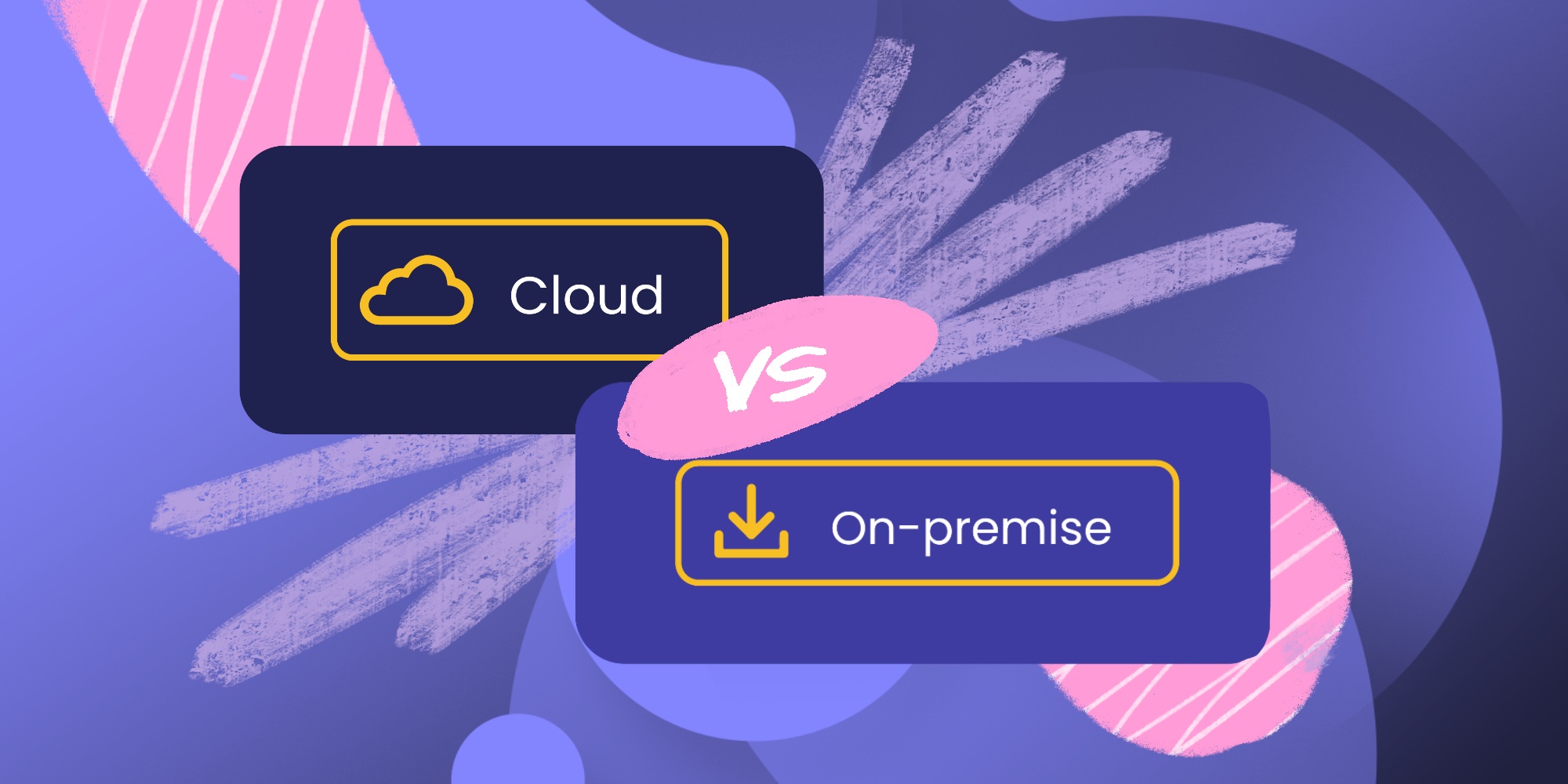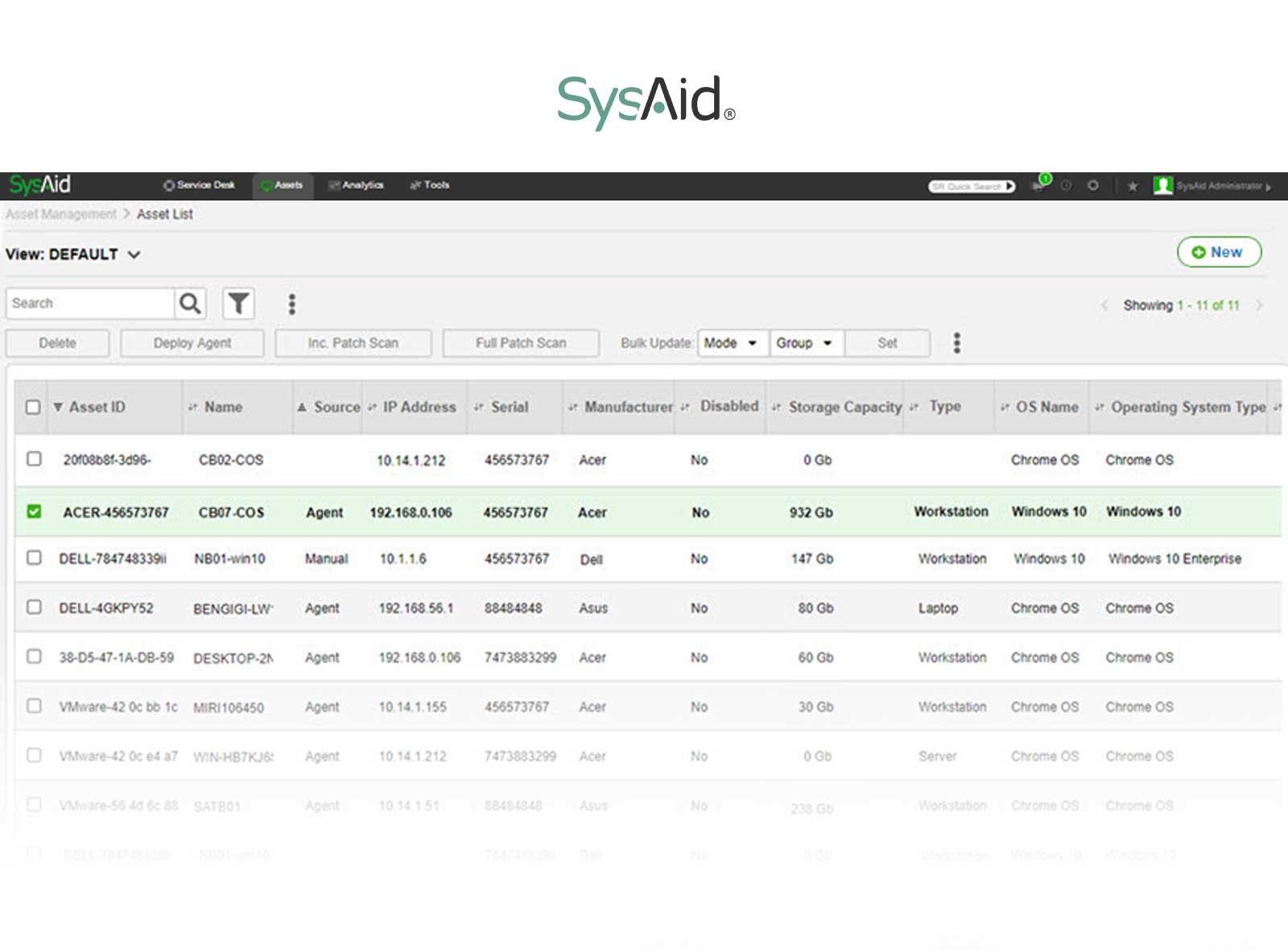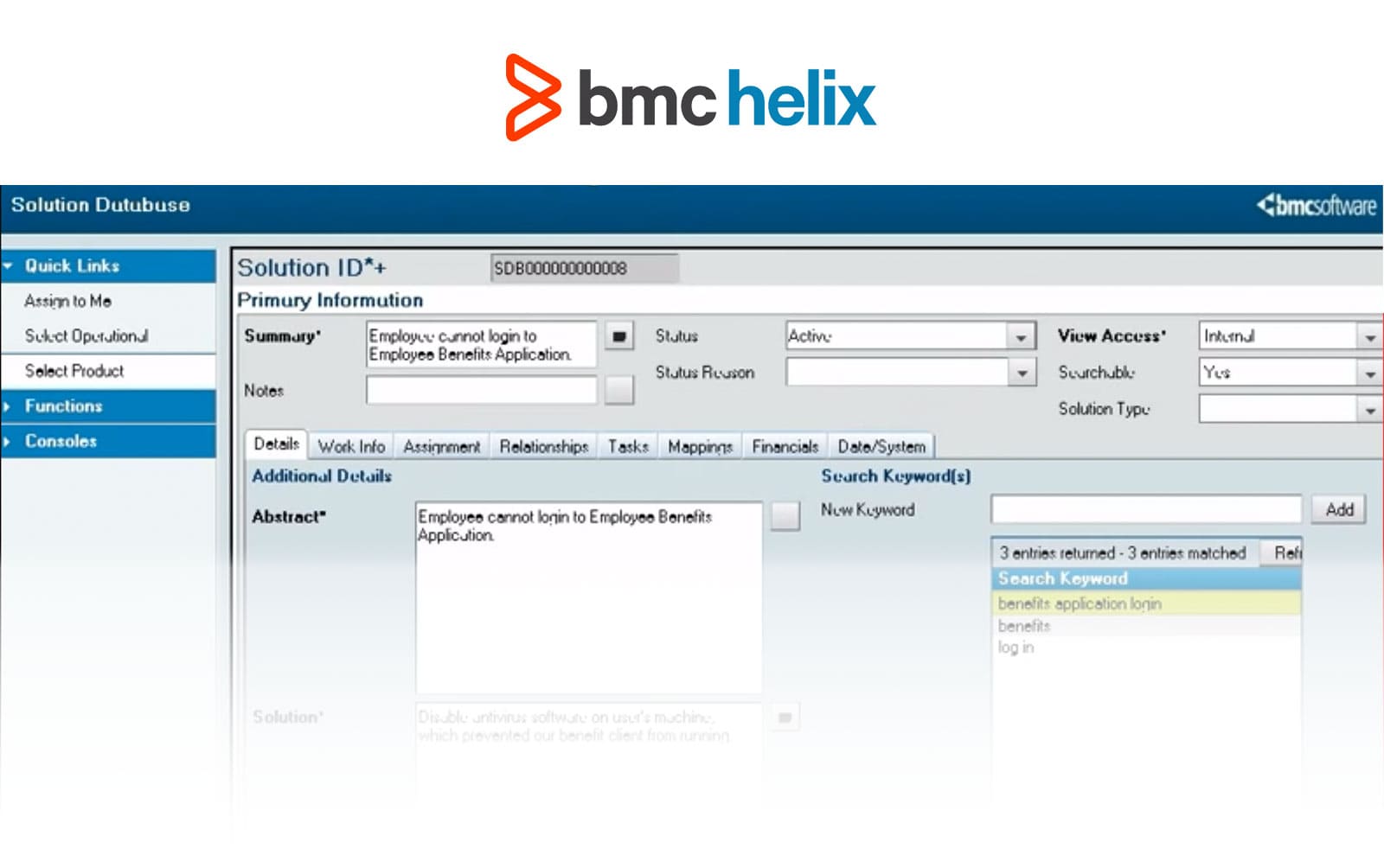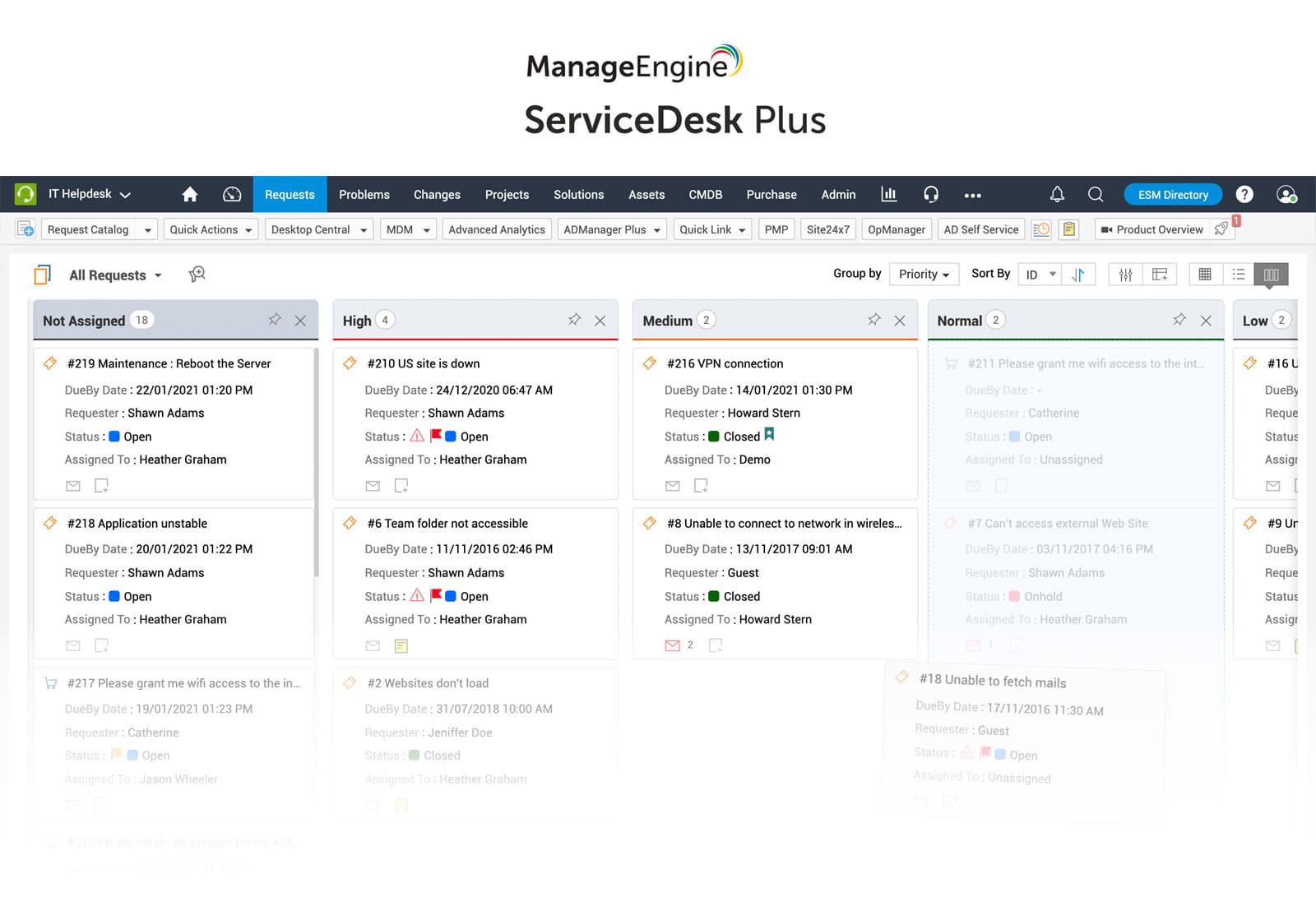When looking for reliable IT Service Management (ITSM) software for your organization, you must determine whether an on-premise or a cloud-based solution best suits your needs.
Software providers are increasingly shifting to offering only cloud-based help desk software, which are popular because they're ready to use right away. Both types offer similar features for Ticket Management, Change Management, or workflows.
The main difference is simple: with on-premise software, you must provide and maintain your own servers, hardware, and technical support. With cloud solutions, the provider handles all that for you. Organizations with strict security needs (like banks) or specific compliance requirements (like government offices) often choose on-premise despite the extra work because it gives them total control over their sensitive information.
In this article, we’ll explore the need for an on-premise help desk solution in some organizations, highlighting the pros and cons of this option. Additionally, we’ll provide a list of the top five vendors that are still offering efficient on-premise solutions.
Ready to dive deeper into the world of on-premise ITSM solutions? Keep reading to uncover everything you need to know!

Who needs an on-premise help desk?
In short, an on-premise help desk differs from a cloud-based solution in that both the software and the data remain in the company’s own installations without the involvement of a third party.
With this in mind, organizations frequently select an on-premise help desk for two primary reasons:
1. Full control over data
Some businesses need complete control over their information due to strict security and privacy requirements. This is especially relevant for industries such as:
- Government agencies that handle classified or sensitive data.
- Banks and financial institutions that must protect customer information.
- Organizations with internal customer support that prefer to manage data in-house.
Cloud-based solutions may not be suitable in these cases, as sensitive information must remain on the company's own servers.
2. Compliance requirements
Certain regulations require organizations to store and manage data on their own infrastructure. For these organizations, a cloud-based solution may not meet compliance needs, making an on-premise setup the better choice.
Organizations that host their own servers and hardware often opt for on-premise help desks. This is particularly common for:
- Highly regulated companies.
- Businesses with dedicated IT support teams.
- Organizations that have the resources for server maintenance and security management.
With an on-premise solution, companies maintain direct control over security, hardware, and compliance, ensuring they meet industry-specific requirements.

5 best on-premise help desk software
If your organization needs an ITSM on-premise solution, there are many vendors that can provide help desk software that aligns with your security and compliance requirements.
Here are some of the most efficient help vendors for an in-house installation:
1. InvGate Service Management

InvGate Service Management is available as both a cloud-based and on-premise solution. One of the things that makes it stand out is its quick implementation, typically taking just 2 to 4 weeks to have a working instance— much faster than many other vendors.
The software can also scale across different departments, making it a strong option for Enterprise Service Management (ESM).
With the on-premise deployment, data stays within your own infrastructure, ensuring security, fast performance, and compliance with internal policies.
For more details on setup, security, or features, you can reach out to the team for a quick consultation.
InvGate Service Management key features
- Self-service capabilities (self-service portal, knowledge base, service catalog).
- Workflow automation with a visual workflow editor.
- AI-powered features that offer agents suggestions on ticket recategorization and help agents write ticket replies.
- Native (InvGate Asset Management, Microsoft Teams, Zapier) and third-party integrations.
InvGate Service Management pricing
Want to see all these in action? Explore the pricing options and get a quote from InvGate tailored to your specific needs, or check how the tool works by signing up for a 30-day free trial.
InvGate Service Management user reviews and ratings
- Gartner Peer Reviews score: 4.6
- G2 score: 4.6
"Excellent service, the team always very open to continuous improvement and adapt perfectly to the operation. It is very friendly and easy to manage, you can also make personalized consultations and they have documentation that guides you"
User review from Gartner, Hardware Engineer
2. SysAid

SysAid is an ITSM solution that provides ticketing, automation, and Asset Management. It offers on-premise, cloud, and hybrid deployment options. SysAid is widely used by small to mid-sized businesses looking for an all-in-one IT support system.
SysAid features
- Automation tools – Reduces manual work with workflow automation.
- Integrated Asset Management – Tracks IT hardware and software.
- Self-service portal – Enables users to resolve issues independently.
- Remote control support – Helps IT teams troubleshoot devices remotely.
SysAid pros and cons
Pros:- Strong automation features reduce repetitive tasks.
- Simple interface for IT teams with limited resources.
- Reporting features can be limited without customization.
- Some advanced ITIL modules require additional licensing.
SysAid pricing details
SysAid offers customized pricing based on deployment type, number of users, and required features. Quotes are provided upon request. It offers a 30-day free trial to users to explore its functionalities.
SysAid user reviews and ratings
- Gartner Peer Reviews score: 4.6
- G2 score: 4.5
"SysAid was able to help the IT team in organizing tickets and by allowing Admins to customize the ticket templates depending on the category and the requirements needed by ticket resolvers to resolve a particular request. There are some limitations in creating templates which should be a basic feature"
Review from Gartner, ICT Specialist
3. BMC Helix ITSM

BMC Helix ITSM is an enterprise-grade IT Service Management platform designed to support ITIL-based processes. Developed by BMC Software, it is used by large organizations that require scalable and customizable Service Management solutions. BMC Helix ITSM is available in on-premise, cloud, and hybrid deployments.
BMC Helix ITSM features
- AI-powered automation – Uses machine learning to categorize, assign, and resolve tickets.
- ITIL-aligned processes – Supports Incident, Problem and Change Management.
- Enterprise-level integrations – Connects with various tools like Microsoft, AWS, and ServiceNow.
- Self-service portal – Provides users with a knowledge base and automated service requests.
BMC Helix ITSM pros and cons
Pros:- Highly customizable and scalable for large enterprises.
- Strong ITIL framework support for structured IT Service Management.
- AI-driven automation improves efficiency.
- Complex setup and maintenance, requiring dedicated IT resources.
- High licensing and implementation costs compared to some alternatives.
BMC Helix ITSM pricing details
BMC does not publicly list pricing for Helix ITSM. Pricing varies based on deployment type, number of users, and required features. Organizations must request a quote for tailored pricing.
BMC Helix ITSM user reviews and ratings
- Gartner Peer Reviews score: 4.3
- G2 score: 3.7
“It's a very powerful solution, we can do everything we want but it is not very intuitive to implement, we have to do things in many different places, it has evolved a lot since last versions, but it has a lot to improve.”
User review from Gartner, IT VP
4. ManageEngine Service Plus

ServiceDesk Plus by ManageEngine is an IT help desk developed by Zoho Corporation solution. It offers on-premise, cloud, and hybrid deployment options. Known for its wide range of features, it serves IT teams that need ticketing, asset tracking, and ITIL support in one platform.
ManageEngine ServiceDesk Plus features
- Multi-channel ticketing – Users can submit requests via email, portal, or phone.
- Change and Problem Management – Helps IT teams manage service disruptions.
- SLA management – Automates response and resolution time tracking.
- IT project management to manage projects and resources.
ManageEngine ServiceDesk Plus pros and cons
Pros:- Comprehensive ITSM features in one platform.
- Strong reporting and analytics capabilities.
- Flexible deployment options, including hybrid models.
Cons:
- Some features require separate licensing or add-ons.
- Interface can feel cluttered for first-time users.
ManageEngine ServiceDesk Plus pricing details
Pricing varies by edition (Standard, Professional, Enterprise) starting at $13/month/technician. The tool comes with a 30-day free trial.
ManageEngine ServiceDesk Plus user reviews and ratings
- Gartner Peer Reviews score: 4.4
- G2 score: 4.2
"It's flexible since it can exist in an on prem and cloud version. Depends on the appetite and customization and support needed by the company. Has a lot of easy integration points with popular collaboration tools such as M365. There is a delay on patches and updates on the on prem version as compared to the cloud version. Reports customization is not easily done and need help from support."
User Review from G2, CISO
5. TOPdesk

TOPdesk is an ITSM tool that offers an on-premise option. It combines a quick set-up with personal guidance, providing user-friendly features and best practices for managing tickets, tracking assets, and sharing knowledge.
TOPdesk features
- Shared service desk – Supports IT, HR, and facilities on a single platform.
- Knowledge base integration – Helps users find solutions without submitting tickets.
- Workflow automation – Streamlines request handling with predefined rules.
- SLA monitoring – Ensures service delivery aligns with agreements.
TOPdesk pros and cons
Pros:
- Intuitive interface for both end-users and agents.
- Modular design allows companies to expand features as needed.
- Strong knowledge management capabilities.
Cons:
- Some advanced ITSM functions are limited in the on-premise version.
Customization options are rather limited compared to competitors.
TOPdesk pricing details
TOPdesk pricing is tailored based on company size and required features, it starts at $66 per user/month. They provide a 30-day free trial to explore its functions.
TOPdesk user reviews and ratings
- Gartner Peer Reviews score: 4.5
- G2 score: 4.2
“Well layered servicedesk tooling that can be used by customers. The Self Service Portal helps our customers to easily find information or ask for help. Integration features usually cost money either via implemenation hours or 3rd party licensing. Getting used to the interface for its "Modules" and "Settings" can sometimes be confusing, as it's a lot of trial and error searching. ”
User review from Gartner, IT Manager
Pros and cons of on-premise help desk software
There’s no one-size-fits-all answer when deciding between an on-premise or cloud-based help desk. The right choice depends on your organization’s needs, resources, and regulatory requirements. Below is a detailed breakdown of the advantages and disadvantages of an on-premise solution.
Pros of on-premise help desks
1- Full control over data – Since all data is stored on internal servers, organizations maintain complete ownership and control, minimizing exposure to third-party risks.
2- Enhanced security customization: Businesses can implement security measures tailored to their specific needs, such as advanced firewalls, encryption, or access restrictions.
3- Compliance with industry regulations: On-premise solutions are often necessary for organizations that must meet strict regulatory requirements, such as:
-
Healthcare providers subject to HIPAA.
-
Financial institutions following PCI-DSS.
-
Companies handling European customer data under GDPR.
4- Consistent performance and reliability: Internal IT teams can optimize system performance, allocate resources efficiently, and prevent bottlenecks that may arise in shared cloud environments.
5- More control over integrations and customizations: Companies can modify the software, integrate it with other internal tools, and develop custom features without restrictions imposed by a cloud provider.
Cons of on-premise help desks
1- High upfront costs: Unlike cloud-based solutions that operate on a subscription model, on-premise systems require significant initial investment in:
-
Hardware (servers, storage, networking equipment).
-
Software licenses (one-time or recurring fees).
-
IT personnel to manage and maintain the infrastructure.
2- Ongoing maintenance and upgrades: Businesses must allocate IT resources to handle software updates, security patches, and server upkeep, which can be time-consuming and costly.
3- Scalability limitations: Expanding an on-premise system requires purchasing and configuring additional hardware, whereas cloud-based solutions can scale up or down more flexibly.
4- Risk of downtime and data loss: If internal servers fail due to hardware malfunctions, power outages, or cyberattacks, system downtime can disrupt support operations. Disaster recovery planning is essential.
5- Restricted remote access: Unlike cloud solutions that are accessible from any device with an internet connection, on-premise systems often require VPNs or other secure remote access methods, which can add complexity.
While an on-premise help desk provides greater control and security, it also demands significant investment and ongoing management. Businesses should carefully assess their regulatory obligations, IT capabilities, and long-term costs before making a decision.

In short
Although most vendors are moving to an only-cloud offering, there are still many organizations in need of an on-premise type of IT Service Management solution.
Installing on-premise help desk software is preferred by organizations that require complete control over their data, such as government agencies, banks, healthcare institutions, and organizations with specific compliance requirements
If this matches your organization's needs, you need an on-premise solution, like InvGate Service Management. This option enhances your privacy and security while maintaining the focus on delivering top-tier IT Service Management to your business.
We understand that when considering an on-premise solution, you may need more detailed information. To help address any questions or concerns, we invite you to schedule a quick call with our team.
Plus, you can explore our solution with a 30-day trial, absolutely free and with no obligations!
















